How to Revive Your Business: Strategies for Thriving in Challenging Times
Greetings, ambitious entrepreneurs and steadfast business owners! In today's blog post, we will embark on an inspirational voyage to revive your business and chart a course toward unparalleled prosperity, even amidst the tumultuous seas of modern commerce.
The year is 2023, and the winds of change are blowing fiercer than ever before. Technology continues advancing at breakneck speed, consumer behaviours and expectations keep evolving, and new competitors arise constantly – the very foundations of business seem to shift like sand.
Yet Fortune favours the bold! During our time together, we will uncover battle-tested strategies and industry insights to revive your business, spur innovation, and future-proof your business for the better days ahead.
By the post's end, you will have the actionable knowledge and go-getter mindset to:
- Reimagine your products and services to outperform rivals
- Create marketing campaigns that captivate new audiences
- Optimise operations and slash costs for improved profitability
- Assemble an A-team of talent to drive growth
- And much more!
The path won't always be smooth, but stick with me, and you will rekindle that entrepreneurial spark. Your business will adapt and thrive amidst the winds of change. Ready your sea legs, and let's set sail! The tide of success awaits those brave enough to rise to the challenge.
Table of Contents
1 – Conduct a Comprehensive Business Analysis
Before we dive into the strategies, let's take a step back and get to know your business inside out. A comprehensive analysis will provide the foundation for informed decision-making and pave the way for your business revival.
1.1 – Review Your Business Goals and Objectives

Taking time to step back and review your business goals and objectives is crucial, no matter what stage your company is in. As an entrepreneur or business leader, it's easy to get caught up in the day-to-day operations and lose sight of the bigger picture. But periodically revisiting your original goals and plans can help ensure you stay on track for long-term success.
Midway through the year is an ideal time for this type of review. The halfway mark provides perspective on what's been accomplished and where progress is still being made before year-end.
Start by re-examining your early business goals and objectives. Did you set specific, measurable targets for revenue, profitability, market share, product development, customer acquisition, etc? Review any documents or notes from when you first defined these goals.
Then look honestly at where your business stands today relative to those aims. Have you met specific metrics and milestones? Made progress but still needs to reach particular goals? Or are you significantly off-base with some of your original objectives?
Gauge whether your early goals still make sense or need to be adjusted based on changing market conditions, emerging new opportunities, or other factors. Revise plans accordingly to keep them realistic and aligned with where you want to take the business long-term.
Also, consider if you've strayed off course strategically in any areas. Have you drifted from your original target customer profiles or value propositions? Need to focus on more promising product lines or ventures? Refocus on your core strengths and mission.
Course correcting now will help propel your business forward more efficiently in the coming months. Regular check-ins on your goals and direction allow you to keep your vision fresh, your plans sharp, and your business primed for ongoing success.
1.2 – Analyse Market Trends and Customer Behaviour
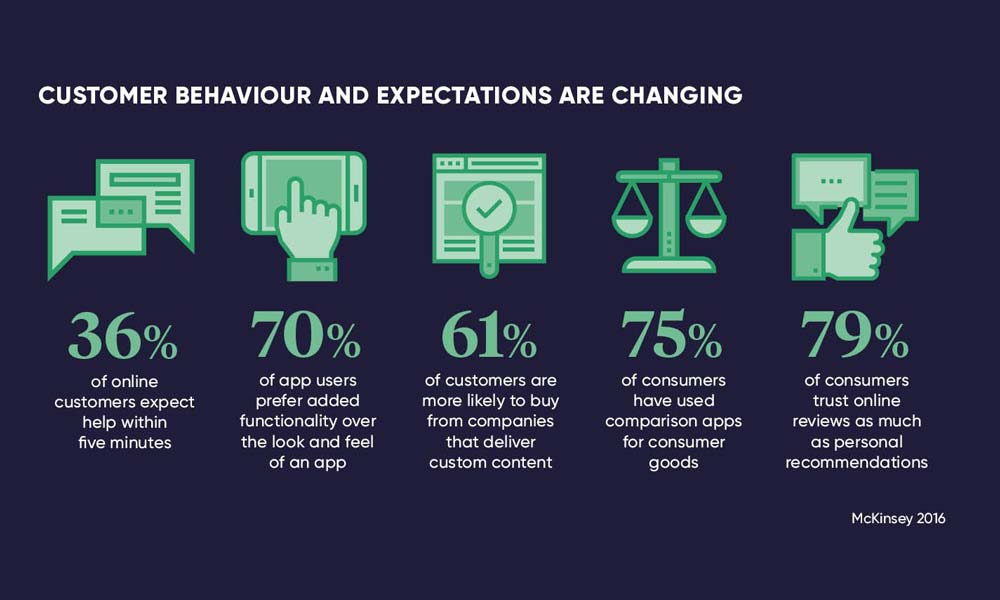
In today's rapidly evolving world, market trends and consumer preferences change at lightning speed. Brands that want to stay relevant must keep their finger on the pulse and continuously adapt.
With new technologies emerging daily and global events shifting perspectives, 2023 is proving to be a year of immense change. Consumer values and priorities are being reshaped, creating new demands and expectations. What appealed to audiences yesterday may fall flat today.
To keep up, brands must prioritise understanding their customers' evolving needs and desires. Regular market research, data analysis and audience engagement can reveal the latest motivations driving their target demographics.
This intelligence should directly inform product development and marketing. Agility is critical – brands should be ready to swiftly change course to align with where their audience is heading.
Treasure troves of data are available for those willing to listen. Leverage online reviews, social media, surveys and more to gain real-time insight into rising and falling trends.
Consumer values shift towards sustainability, quality over quantity, and transparent business practices. Brands embracing purpose-driven messaging and authentic storytelling are rising to the top.
While the pace of change can be dizzying, those who manage to keep up can earn customer loyalty and stand out. The future favours the bold and the responsive. Meet your audience where they are now, not where they were yesterday.
1.3 – Assess Your Competition

It's often said to keep your friends close and your enemies closer. The same logic applies to business competitors. Conducting competitive analysis on rival companies in your industry is crucial for fully understanding the marketplace. This lets you identify competitors' strengths and weaknesses to better position your brand and offerings.
A thorough competitive analysis examines pricing, product features, marketing messaging, customer service, market share, and more. Learn where competitor companies excel and where they falter. Then use those insights to your advantage. If a rival is weak on shipping costs, ensure your business highlights reasonable prices. If another competitor's social media presence lacks engaging content, double down on creative digital marketing across platforms.
Analysing the competition helps reveal what your company does best and the precise areas where you can differentiate. Once you pinpoint where competitors fall short, those become opportunities for you to excel and stand apart in customers' minds. The goal is to craft a unique brand identity and product benefits that customers won't find duplicated elsewhere. Ongoing competitive research ensures you continue evolving ahead of market trends and avoiding duplication.
In today's oversaturated market with overlapping products, meticulous competitive analysis is required to thrive. By monitoring rivals while playing to your strengths, your business can attract customers seeking precisely what you offer. Turn competitors' weaknesses into your competitive advantage. Use research insights to refine company positioning and provide something distinct that resonates in your industry. Sharpen the contrast between their offerings and yours.
2 – Reinvent Your Brand Identity
Your brand is the soul of your business, and it's time to give it a fresh lease on life. Revitalise your brand identity to make it resonate with your target audience and create lasting connections.
2.1 – Redefine Your Brand Purpose
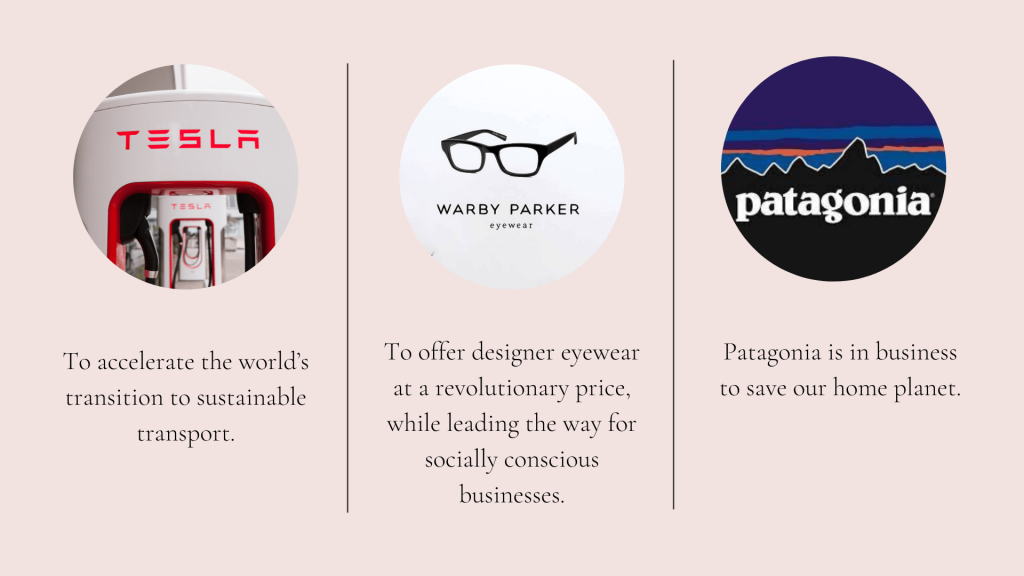
Redefining your brand's purpose is vital to reinvigorate your business and connect with customers more profoundly. To start the process, take time to reflect on what makes your company truly unique. What niche do you fill, or what problem do you solve exceptionally well? Understanding your distinctive value and raison d'être will clarify your core mission.
Next, re-examine your brand's foundational values. What principles or beliefs does your business live by? Are there causes or issues you care about as an organisation? Revisiting these ideals can unveil new directions or untapped potential. For example, demonstrating a solid commitment to social responsibility and environmental sustainability can attract ethically-minded customers.
Consider also surveying employees about what they find meaningful in their work. Their insights into the company's culture and impact may reveal opportunities to express purpose. Then communicate regularly about volunteer programs, green operations, or other initiatives that bring shared values to life.
The goal is an authentic brand purpose that resonates both internally and externally. A compelling purpose is an emotional bond between customers and companies with aligned ideals. Purpose inspires excellent work, builds loyalty and community among all stakeholders, and differentiates your business in a crowded market. Discovering your distinctive reason for being through ongoing reflection and conversation can redefine your brand for the better.
2.2 – Revamp Your Visual Identity

The power of a compelling visual brand identity cannot be overstated. In today's crowded digital landscape, having a logo, colour palette, fonts, and overall visual style that immediately evokes your company in customers' minds is invaluable. An outdated or disjointed visual identity can prevent your brand from achieving its full potential.
Now may be the perfect time to re-energise your company's look and feel with a logo redesign and refreshed brand guidelines. Work with a talented graphic designer to craft a logo that encapsulates your brand personality and resonates with your target audience. Complement it with a thoughtfully selected colour palette that aligns with your brand character – for example, bold primaries to convey youthful energy or muted neutrals for a more refined impression.
Ensure visual harmony by uniformly applying your new visual identity across all customer touchpoints – your website, packaging, signage, advertising, stationery, uniforms, and more. Consistency strengthens recognition and helps customers instantly identify your brand.
An invigorated visual identity can profoundly influence how your company is perceived. It lets you put your best face forward to new and existing customers. In today's aesthetically driven world, your visual branding plays a pivotal role in shaping opinions, sparking interest, and inspiring loyalty to your brand. Investing in compelling, cohesive visuals gives your business a vital edge in leaving a memorable impression.
2.3 – Craft a Compelling Brand Story

Stories have power. They speak to our deepest desires and connect us through shared experiences. Successful brands understand this and leverage storytelling to build strong emotional bonds with their customers.
Your brand likely has a fascinating origin story filled with passion, struggle, and triumph. Share the tale of how your founders' vision led them to take a risk on starting something new. Let people into the behind-the-scenes journey of overcoming challenges and achieving milestones.
Beyond your brand narrative, find ways to incorporate storytelling into your content and campaigns. Feature customer stories that relatably convey how your product or service impacted real lives. Build an engaging storyline into your ads with compelling characters and plot progression.
Storytelling allows you to tap into timeless human motivations like the desire to find meaning, the need to belong, and the power of hope. People invest emotionally in stories of underdogs beating the odds, communities coming together, and products unlocking new possibilities.
Approach storytelling authentically. Build campaigns around narratives that genuinely reflect your values and purpose as a company. Successful brands like Apple, Nike, and Dove have created strong brand identities by associating themselves with aspirational stories that resonate with their target audiences.
Consumers today are drawn to brands they feel a heartfelt connection with. Develop a memorable brand story that reveals the humanity behind your company. When woven skillfully into the customer experience, storytelling transforms a passive audience into a community united by a shared narrative.
2.4 – Enhance Customer Experience

In today's highly competitive business landscape, delivering a fantastic customer experience is no longer just a nice bonus – it's an absolute necessity for success. More than ever, customers have high expectations and ample choices regarding brands and products. More than simply meeting their basic needs is required to earn loyalty or stand out. That's why forward-thinking companies realise exceptional customer service is the new holy grail of business achievement.
So what does it take to provide next-level customer experiences? First and foremost, it requires adopting a genuinely customer-centric mindset across your entire organisation. Every team member should be laser-focused on understanding customer needs, solving problems quickly, and exceeding expectations at every touchpoint. Go above and beyond the basics of good service by personalising interactions and showing customers how much you value them. Surprise and delight them with special perks, proactive outreach, and individualised recommendations tailored to their preferences. Ensure your brand interactions feel more human by infusing them with empathy, warmth and authenticity.
It also means empowering your employees to take the initiative to resolve issues and make things right for the customer without endless procedures and approvals. Please give them the tools, training and authority to handle complaints, offer credits, or send small gifts to turn frustrated customers into delighted ones. Make the extra effort to follow up and ensure issues are fully resolved to the customer's satisfaction.
While many companies pay lip service to ideas like “the customer is always right,” truly customer-centric brands walk the talk at every level. They go the extra mile in ways big and small, day in and day out, to show customers they genuinely care and are committed to delivering outstanding experiences. That kind of top-notch service pays dividends in the form of loyal, satisfied customers who become brand advocates. In a competitive landscape where customer experience is the new battlefield, it's quickly becoming the holy grail that separates market leaders from the rest of the pack.
3 – Embrace Digital Transformation
We're in the era of digital disruption, and businesses that adapt will thrive. Embrace the digital transformation to stay relevant and ahead of the competition.
3.1 – Build a Robust Online Presence
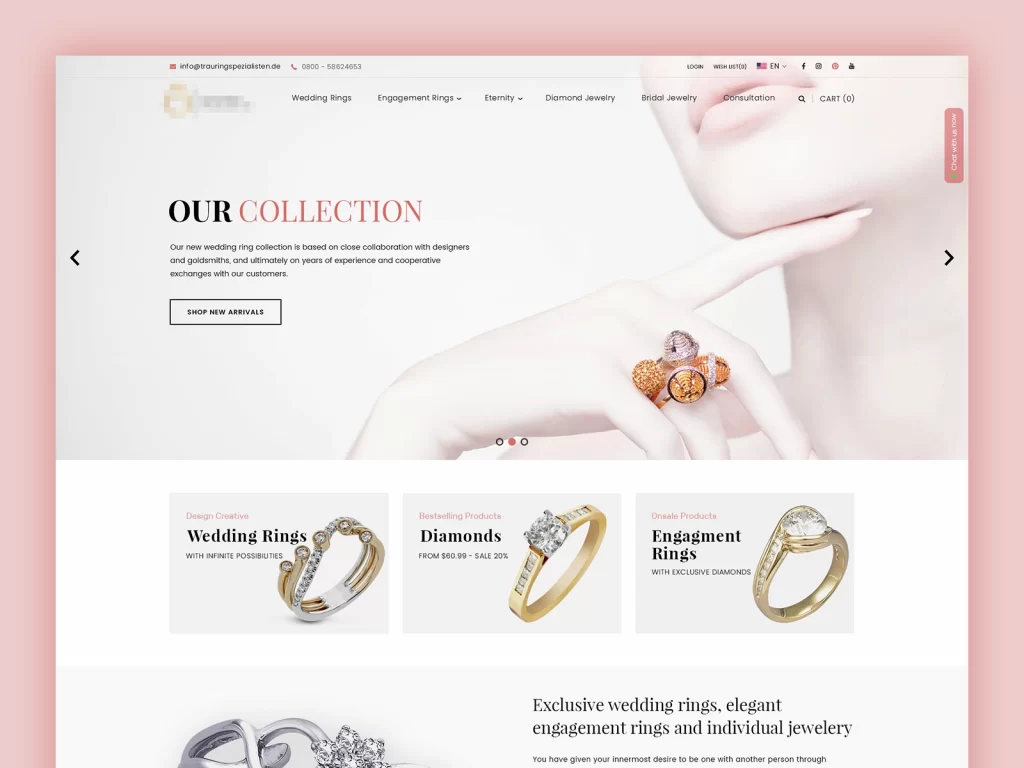
In today's digital world, your website is your virtual storefront and is often the first impression you make on potential customers. With more and more consumers going online to research and purchase products and services, having an effective web presence is critical for any business.
The key is to create or update your website to provide an optimal user experience, especially on mobile devices. Use a responsive web design that dynamically adapts to different screen sizes. Include high-quality imagery, easy-to-read fonts, and simple navigation. Ensure all pages load quickly, forms submit correctly, and buttons work as expected. Eliminate clutter and streamline menus and layouts.
You'll also want to optimise your site for search engines through SEO best practices. Perform keyword research to identify terms and phrases your customers are searching for. Then strategically incorporate these keywords into your page titles, headers, content, alt text, URLs, etc. Adding fresh, original content regularly also helps with SEO.
Beyond your actual website, leverage social media to connect with your audience. Be active in posting relevant content, images, and videos on the social platforms where your customers spend time. Respond promptly to comments and questions. Use hashtags, tagging, and other tactics to expand your reach. Consider running social media ads to build awareness and drive traffic to your site.
You can effectively showcase your business offerings online with a polished, user-friendly website and active social media presence. A robust digital footprint allows you to engage your target market, highlight your brand identity, and convert visitors into paying customers. In today's world, an optimised online storefront is crucial for business success and growth.
3.2 – Implement eCommerce Solutions
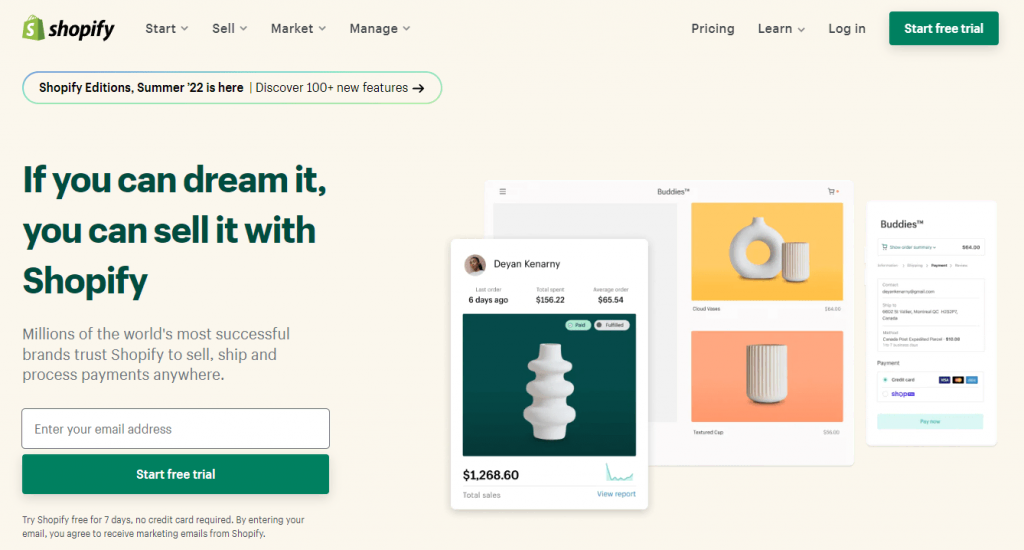
The days of relying solely on brick-and-mortar stores are over. In today's digital world, online presence is crucial for reaching more customers and growing your business. eCommerce platforms empower companies to create seamless shopping experiences that go far beyond the limitations of a physical storefront. By taking your business online, you can significantly expand your customer reach on a global scale.
An eCommerce website or app opens the door to around-the-clock sales without geographical restrictions. Customers can browse and purchase products conveniently on their laptops, smartphones or tablets. The ability to shop online caters to modern consumer preferences for speed and flexibility.
Moving into eCommerce widens your customer base and unlocks valuable data and insights into your customers' preferences. With detailed analytics, you can fine-tune your product offerings and marketing initiatives. You gain the ability to personalise content and target promotions to boost sales.
With the right eCommerce platform, you can provide customers with a seamless purchasing process. Offer secure payment gateways, streamlined checkout and top-notch support. Building customer trust and satisfaction will lead to repeat purchases and help your business thrive.
The possibilities of global eCommerce are immense. As a savvy business owner, you need an online storefront to complement your physical location. Combining brick-and-mortar with a stellar web presence gives you the best chance of attracting customers, expanding your reach and taking your business to the next level.
3.3 – Utilise Data Analytics and AI

Data has become an invaluable asset in today's digital world, often compared to gold. As the gold rush drove prospectors to extract every last nugget, companies now race to collect and analyse customer data to gain competitive advantages.
The critical tool for extracting insights from data is analytics; like a prospector's pickaxe that pries precious ore from rock, analytics software mines troves of data to uncover trends and opportunities. With analytics, companies can make smarter decisions driven by facts rather than guesses.
For example, customer support teams can use sentiment analysis to identify pain points in the customer journey. Online retailers can build algorithms that analyse purchase history and recommender systems that suggest complementary or related products to each shopper. Supply chain managers can forecast demands more accurately using predictive analytics, optimising inventory levels and reducing waste.
Data analytics applications are endless, but more than simply collecting data is required. Companies must focus on capturing quality data from various sources, keeping it organised, and developing models and algorithms that turn raw data into actionable insights. With the right approach to collecting, storing and analysing data, companies can unlock innovations and efficiency gains that were unimaginable just a decade ago.
Like the 19th-century gold rush prospectors, companies today have caught data fever. The winners will be those who use the best tools to extract real value from their data without getting lost in an ocean of noise and irrelevance. Data analytics remains a rapidly evolving field, but one thing is sure – data is poised to drive transformative changes across industries for years to come.
3.4 – Invest in Digital Marketing

Welcome to modern marketing in the digital age! Brands today have many exciting new tools and strategies to connect with consumers meaningfully. It all starts with creating captivating content that showcases your expertise. Build trust by consistently providing value to your audience through helpful blog posts, videos, podcasts, and more. Share educational resources, how-to guides, and behind-the-scenes peeks into your business.
Leverage the power of email marketing to nurture leads and retain customers. Segment your list to deliver targeted, personalised messages that speak to specific interests and needs. Drive conversions with compelling subject lines, valuable offers, and clear calls to action.
Harness the reach of social media to boost brand awareness and visibility. Share your content across platforms like Facebook, Instagram, Twitter, and LinkedIn. Engage followers with polls, live videos, AMAs, contests, user-generated content, and responsive messaging. Use hashtags and tagging to expand your presence.
Run paid advertising campaigns on Google, Facebook, Instagram, YouTube, and beyond. Craft data-driven ads tailored to different demographics and buyer journeys. Test and refine your targeting, messaging, creatives, and landing pages. Measure KPIs and optimise key performance indicators.
The possibilities are endless for digital-first brands looking to make meaningful connections in the modern market. With intelligent content and multi-channel marketing, you can build authority and turn audiences into loyal brand advocates.
4 – Innovate Your Products or Services
Innovation is the heartbeat of success. Revitalise your products or services to meet your customer's ever-changing needs and desires.
4.1 – Conduct Product Research and Development
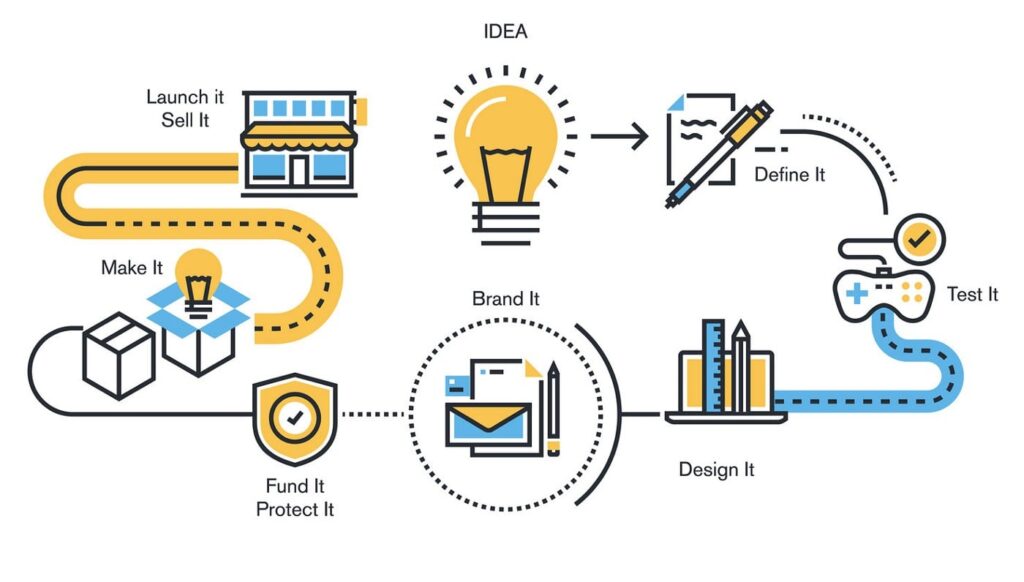
As your customers' needs change, companies must evolve their products and services to meet them. Customer needs are not static – they transform in response to new technologies, economic conditions, demographic shifts, and more. Successful businesses recognise this and make a concerted effort to identify emerging customer needs and adjust their offerings accordingly.
There are a few key ways companies can achieve this:
- Conduct ongoing market research. Use surveys, focus groups, and other methods to solicit customer feedback and gain insight into how their priorities and pain points are shifting. Look for common themes and trends.
- Analyse customer data. Review support tickets, sales conversations, product usage metrics and other data sources to spot recurring problems customers are facing or features they request. This can reveal opportunities.
- Stay on top of market and industry trends. Pay attention to innovations, competitors, regulations, and other forces influencing what customers are looking for.
- Invest in research and development. Set aside resources to actively incubate new product ideas and explore ways to improve existing products. Take time to brainstorm and test concepts.
- Pilot new offerings. Experiment with rolling out new products or features on a small scale before a full launch. Use pilot projects to validate demand and work out any issues.
- Retire outdated offerings. Reassess your portfolio and consider phasing out products or services that no longer have strong market appeal or strategic value.
Companies can build a competitive advantage and become industry leaders by taking a proactive, strategic approach to understanding shifts in customer demand and adjusting offerings accordingly. The goal is to always stay one step ahead of emerging needs.
4.2 – Offer Customisation and Personalisation

Customers expect and demand personalised shopping experiences. Generic, one-size-fits-all approaches won't cut it anymore. Savvy retailers realise they need to cater to each customer's unique preferences to stay competitive.
One way to provide tailored experiences is through product customisation tools and configurators on your ecommerce site. These allow shoppers to tweak products to their specifications – like choosing colours, fabrics, monogramming, and more. Making something their own makes customers more emotionally invested in the purchase.
Retailers can also leverage data and analytics to serve up personalised recommendations. You can gain insights into each customer's wants by tracking buyer behaviour, browsing history, and purchase patterns. This data allows you to suggest products and services matched to their demonstrated interests—the more relevant the recommendations, the higher chance of conversion.
Getting personalisation right requires an omnichannel approach across all touchpoints. On your website, online customisation tools and intelligent recommendations must be coupled with excellent product information and imagery. In-store associates with tablet devices can access customer profiles to provide VIP service. After-sales, loyalty programs and promotions can be tailored based on purchase history.
The retailers who focus on individualising the experience at every step – online and offline – will be the ones who build lasting customer relationships into the future. The brands still cling to a generic, mass-market model that will be left behind. Hyper-personalisation is the new normal, and savvy retailers embrace it to drive revenue and growth.
4.3 – Focus on Sustainability and Eco-Friendly Practices

As environmental awareness grows, more consumers make purchases that align with their values. This rising tide of conscious consumerism presents an opportunity for companies to attract new customers by embracing sustainable and eco-friendly practices.
To appeal to the modern, ethically-minded shopper, highlight your commitment to environmental stewardship throughout your branding and operations. Use eco-friendly materials, like recycled paper for packaging and organic cotton for clothing. Make your products durable and designed for longevity, reducing waste from disposability. Be transparent about your manufacturing process, supply chain and company ethics to showcase your efforts towards sustainability.
Share your vision for people and the planet. Today's consumers want to buy from brands that care about more than profits. Communicate how your company reduces its environmental impact with initiatives like renewable energy, efficient shipping methods and waste reduction programs. Promote any partnerships with environmental organisations or donations supporting eco-causes.
The market for conscious consumerism is only growing. By proudly demonstrating your sustainable practices and products, you can attract environmentally-aware customers looking to purchase in line with their values. Emphasise your commitment to ethical, eco-friendly operations to connect with the rising tide of conscious consumers.
4.4 – Collaborate and Form Partnerships

The adage says that two heads are better than one, which rings true in business as much as anywhere else. Collaborating with others can open up new opportunities and lead to greater success than alone. Companies can achieve things that would be difficult or impossible to accomplish independently when they join forces.
Some of the key benefits of collaboration for businesses include:
- You are expanding reach and access to new markets. By partnering with complementary businesses, you can leverage each other's customer bases, distribution channels, and industry connections to broaden your reach. This allows you to acquire new customers and enter new markets more quickly and effectively.
- It is pooling resources and capabilities. Businesses can share assets, technology, staff expertise, facilities, and funding to achieve more together than separately. This allows them to take on more significant projects, accelerate innovation, and reduce costs through economies of scale.
- Fostering creativity and innovation. Bringing together different perspectives, ideas, and approaches fuels creativity. Collaborations between companies with diverse strengths can lead to innovative solutions, products, and services that single firms may overlook.
- Mitigating risk. Collaborating allows businesses to share risks and costs, enabling them to pursue bolder ideas with less downside exposure for each party.
- Gaining momentum and scale. Startups can accelerate growth by pairing up with established companies that have experience, infrastructure, and access they lack. Meanwhile, large companies can benefit from smaller partners' agility and new thinking.
Of course, while collaborations can be hugely beneficial, they require effort to build trust, align objectives, leverage synergies, and manage complex relationships. But those who learn to collaborate well are often more adaptable, forward-thinking, and positioned for the future than those who go it alone. By leveraging the strengths and capabilities of others, businesses can achieve shared success and thrive in an interconnected world.
5 – Strengthen Your Marketing Strategies
Marketing is the heartbeat of business growth. Strengthen your marketing strategies to attract and retain customers.
5.1 – Refine Your Target Audience
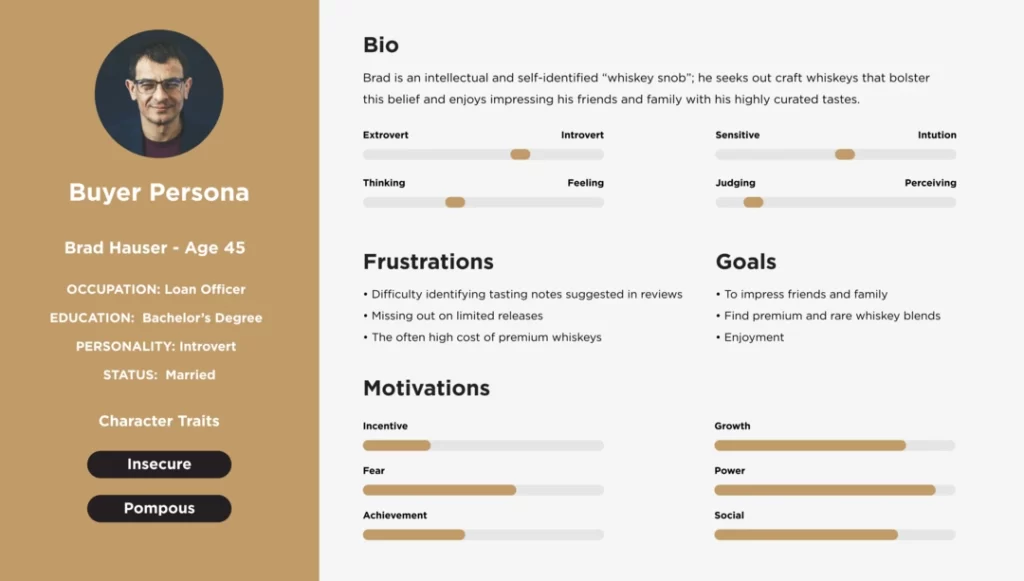
Knowing your target audience is crucial for effective marketing. Take some time to re-examine your buyer personas – the fictional representations of your ideal customers. Are they still accurate and relevant? Update them to reflect customer demographics, behaviours, values, pain points, or preferences changes.
Once your personas are tuned up, use them to focus your messaging. Address the specific problems and needs your prospects care about most. For example, if cost is a big concern, emphasise how your offering can save them money compared to alternatives. Or, if convenience matters, highlight how your solution simplifies their lives.
Adapt your content format and style for each persona too. Technical buyers may want detailed specs and case studies. Busy executives prefer snappy infographics and short videos. The more your content resonates with your audience's preferences, the better it will connect.
Testing and optimisation should continue beyond launch as well. Pay attention to engagement metrics, sales conversions, and customer feedback to refine your targeting and messaging over time. The more tailored your marketing is to your audience, the greater your chances of success.
5.2 – Utilise Content Marketing

Quality content is essential for establishing yourself as a thought leader and attracting an engaged audience in 2023. Rather than focusing on quantity alone, prioritise creating content that provides genuine value for your readers.
Aim to publish blogs, videos, podcasts, and other formats that address your target audience's pain points and interests. Do thorough research to ensure your content offers a novel perspective or new information. Structure your content in a way that is easy to digest – use headers, lists, images etc.
In addition to valuable insights and education, infuse your content with your unique personality. Share relevant personal anecdotes and inject some humour when appropriate. This helps build a connection with your audience.
Promote your content across multiple platforms, including your website, social media, and guest posting opportunities. Make content easily shareable. Monitor engagement levels to identify which topics and formats resonate most.
Continually experiment with new forms of content and assess what works. Remain consistent in frequently publishing content so you stay top of mind. The higher quality and quantity of content you create, the more you solidify your status as an industry leader. Delivering value content takes time, but the long-term payoff in credibility and audience loyalty is immense.
5.3 – Implement Influencer Marketing

In today's social media landscape, influencers have significant sway and impact on their followers' opinions and purchasing decisions. Identifying and collaborating with influencers who genuinely align with your products or services can be a highly effective promotion strategy for a brand.
When vetting potential influencer partners, look beyond their follower count and take a deeper look at the level of engagement they receive, the niche they occupy, and the overall aesthetic and tone of their content. An influencer with a highly-engaged audience of 10,000 followers interested in your product's specific niche may prove more beneficial than an influencer with 100,000 disengaged followers who don't fit your target demographic.
Once you've identified a few influencers who authentically align with your brand, reach out to them to gauge their interest in a partnership. Be prepared to explain why your product or service is a good fit for their audience and platform. If budget allows, you can offer the influencer discounted or complimentary access to your products in exchange for content creation and promotion.
When partnering with influencers, it is essential to give them creative freedom to produce compelling content as they normally would while organically integrating your brand. Overtly promotional or scripted-sounding posts from influencers tend to perform poorly compared to influencers' usual content style. The goal is for their followers to develop trust and affinity for your brand through positive associations and seamless recommendations.
Cultivating authentic relationships with the right influencers can increase your brand's visibility, expand your audience, drive engagement and website traffic, boost conversions and sales, and ultimately help grow your business. With dedicated relationship-building and strategically crafted partnerships, influencer marketing can be a smart move for brands looking to thrive on social media.
5.4 – Harness the Power of Customer Testimonials and Reviews

Social proof is a highly effective persuasion technique that can significantly impact your business. When potential customers see others happily using your product or service, it builds trust and confidence. Encouraging satisfied clients to leave online reviews, testimonials, and ratings for your company can provide the validation new customers need before making a purchase.
Make it easy for happy clients to leave feedback by sending a polite request and link after receiving your product or service. Offer an incentive like a discount on future purchases to motivate customers to take a few minutes to write about their positive experiences.
Display the most glowing endorsements prominently on your website's homepage, product pages, and “Testimonials” section. Rotate through different quotes and review excerpts to showcase a variety of perspectives. Social media is another excellent platform to highlight satisfied customers. Share great reviews, testimonials and ratings on your business Facebook page, Instagram profile and other accounts.
Customers today often research online before making purchases. They look to reviews and testimonials to gain confidence in their decisions. By proactively collecting positive customer feedback and broadcasting it across your digital platforms, your business can leverage the power of social proof for increased sales and credibility.
6 – Strengthen Financial Management
A solid financial foundation is crucial for long-term success. Strengthen your financial management practices to weather any storm.
6.1 – Assess and Optimise Pricing Strategies
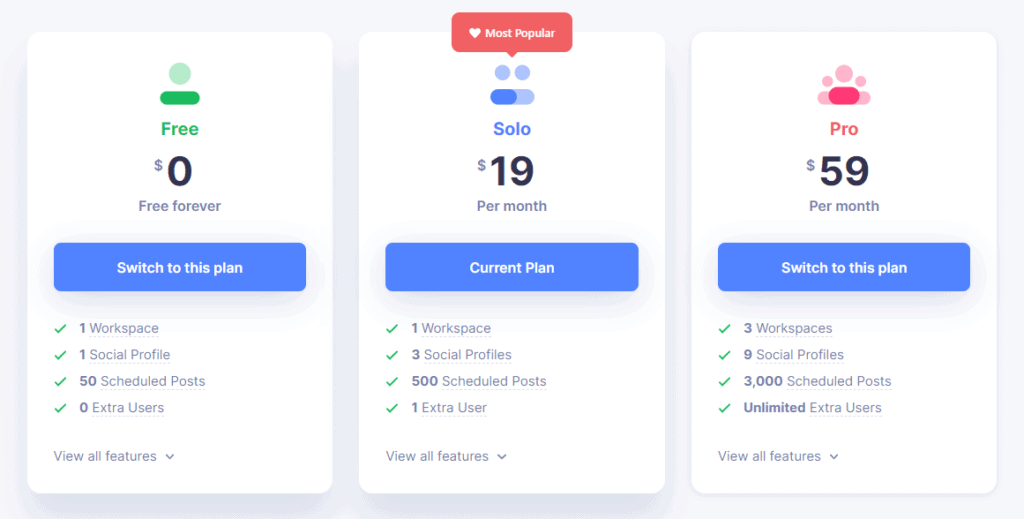
Pricing is indeed an art that requires thoughtful strategy and consideration. When determining pricing for products or services, it is wise to analyse the competitive landscape and customer perceptions thoroughly. Unthinkingly matching competitors' prices without understanding context risks eroding profits and value—instead, research competitors' pricing and positioning. Identify your differential advantages in quality, features, or brand reputation. Understanding gaps and overlaps build an informed perspective.
With that competitive insight, shift focus to the customer vantage. Avoid an internal cost-plus model. Pricing based on production expenses and desired margins alone neglects external value perceptions. Customers weigh benefits received against costs paid. Conduct market research to reveal perceived value, price sensitivity, and willingness to pay. Integrate those demand-side insights with competitive intelligence.
Armed with a 360-degree market view, employ value-based pricing strategies. Price according to the distinctive worth customers gain, not merely incremental costs. Quantify and emphasise exclusive advantages that others lack. For example, highlight specialised expertise and customisation in professional services. Or communicate premium quality materials and craftsmanship for durables. Providing outstanding value sustains superior margins. But ensure prices remain accessible within customers' reason.
6.2 – Improve Cash Flow Management
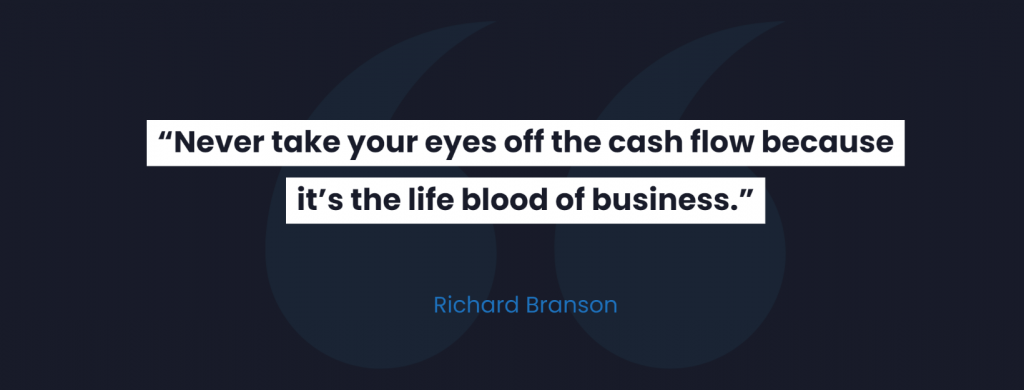
In business, cash flow is crucial for success. Sufficient liquidity enables companies to meet their financial obligations, invest in growth, and weather unexpected challenges. That's why the adage “cash is king” rings true for enterprises of all sizes.
To optimise cash flow, businesses should focus on efficiently managing their accounts receivable and accounts payable. On the receivables side, setting clear payment terms, invoicing promptly, and collecting outstanding balances promptly are key. Technologies like automated reminders and online payment portals can streamline receivables management. Taking advantage of early payment discounts but avoiding late fees is ideal on payables. Optimising the timing and processes around payables can liberate working capital for other uses.
Furthermore, building an emergency fund gives companies an added cash flow cushion. Having ample cash reserves and access to credit offers businesses the flexibility to handle revenue shortfalls, unanticipated expenses, and other surprises. The COVID-19 pandemic underscored the importance of emergency funds and liquidity planning for enterprises across industries.
6.3 – Cut Unnecessary Costs and Increase Efficiency
To improve profitability, it's essential to carefully analyse expenses and identify areas where costs can be reduced without negatively impacting quality or customer satisfaction. Some strategies to consider include:
- Review supplier and vendor contracts to negotiate better rates or switch to more cost-effective alternatives. There may be opportunities to consolidate suppliers to get volume discounts.
- Evaluate business processes to identify ways to increase efficiency and productivity through automation, streamlining or eliminating duplicative or non-essential tasks—leverage technology such as AI, machine learning and robotic process automation to reduce manual work where applicable.
- Analyse staffing needs and shift resource allocations to balance workloads more optimally. Consider cross-training employees to improve flexibility.
- Examine recurring expenses such as software subscriptions and memberships. Cancel or renegotiate any unnecessary services.
- Leverage economies of scale in purchasing and sourcing. Take advantage of bulk pricing and just-in-time inventory management.
- Review energy consumption and identify opportunities to cut utility bills through LED lighting, upgraded HVAC systems, automatic power-down settings, etc.
The goal is to scrutinise every expense, understand its purpose and value, and determine if there are more cost-effective options. With a strategic approach, operating costs can likely be reduced substantially without negatively impacting outcomes. The savings can then be allocated towards more profitable activities.
Need Help to Revive Your Business?
Congratulations, you trailblazing entrepreneur! You have successfully navigated the tumultuous waters of business revival. When faced with immense challenges threatening your company's existence, you demonstrated remarkable resilience, adaptability and leadership.
The road to reviving your business was not easy. It required making difficult decisions, letting go of outdated models, and embracing new technologies and strategies. But you met each obstacle head-on with courage and creativity. You put your customers front and centre, listening to their changing needs and priorities. You empowered your team to think outside the box, rewarding innovation and initiative.
Your once-struggling business is leaner, more agile and better positioned to capitalise on emerging opportunities. The future looks bright, but you know success requires continued vigilance. Complacency is the enemy of progress.
So stay alert – keep your ear on the ground and your eye on the horizon. Continuously evaluate the competitive landscape and your capabilities. Make measured bets on calculated risks. Invest in upskilling your workforce and adopting cutting-edge solutions. Reward the customer obsession and growth mindset that got you here.
Most importantly, believe in yourself and the renewed potential of your enterprise. Your grit, vision and care have brought you this far. With the same tenacity and openness to change, the best is yet to come.
The world needs your products, services and leadership now more than ever. Go forth confidently to create value, serve society and revive your business. The future belongs to the bold – now is your time to conquer it!

Once you know what’s wrong, you need to make changes to your business. This could involve changing your products or services, changing your marketing strategy, or changing your business model altogether.